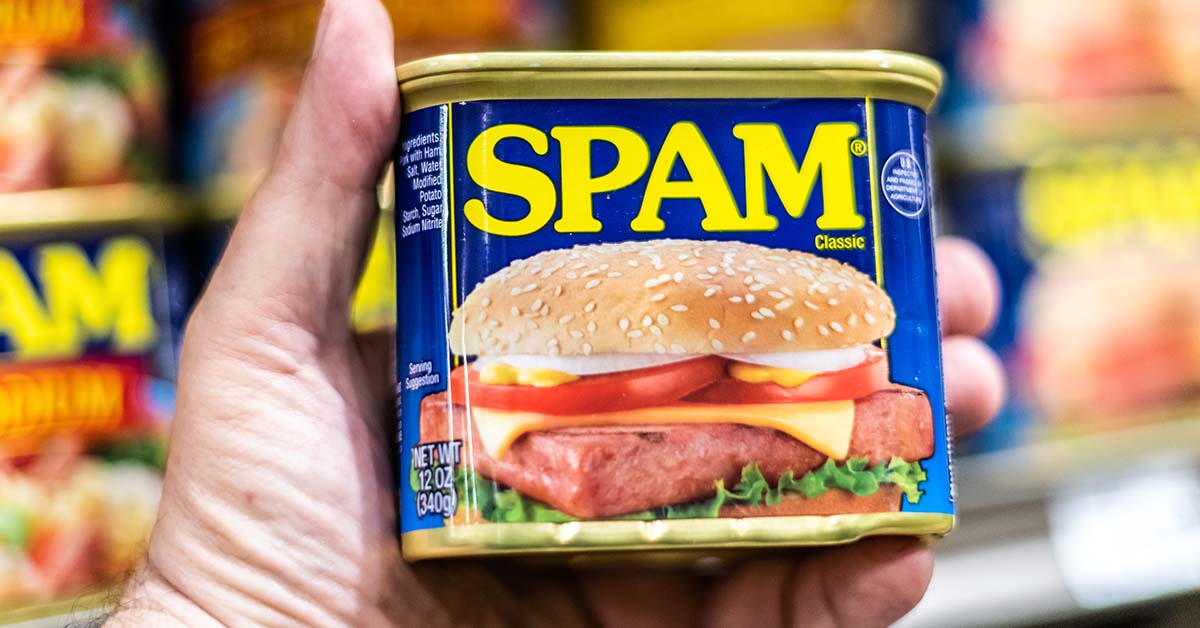Most people love SPAM and it’s a popular meal item in numerous parts of the world. Meanwhile, others cringe at the idea of eating the product. Either way, most people have heard of it and surprisingly hold a number of misconceptions about it. Here are 9 popular myths regarding the canned meat.
1. SPAM isn’t Popular anymore

Most people believe SPAM to have been popular in the past. While that is true, people are often surprised to find that the canned meat is just as popular, if not more so, than when it first emerged. For example, by the year 2021 Hormel Foods reported record sales that had grown over the course of 7 years. “We’ve had to announce new capacity that we’re going to bring online in 2023 to meet the demand, so Spam is as strong as it’s ever been.” According to Jim Snee, Hormel Foods’ CEO at the time. In fact, SPAM is so popular that the food company has partnered with creators to make apparel and merchandise featuring the iconic brand.
Read More: 25+ Examples of Unusual Canned Foods From The US and Around the World
2. It’s only Popular in the US
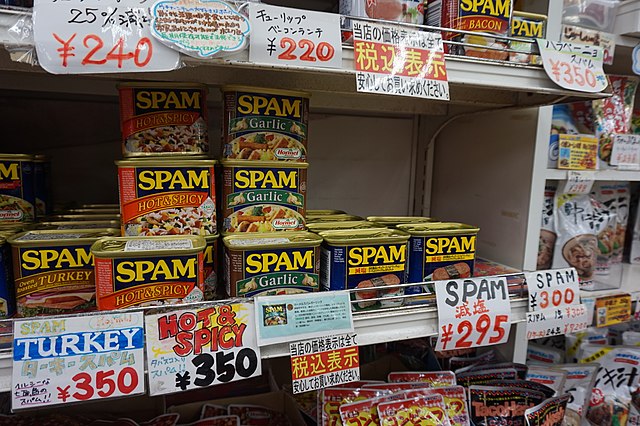
Although SPAM originated in the US and is perhaps more popular in Hawaii than anywhere else in the world, it has also become popular in numerous countries including those of Asian or Pacific Island descent, and U.S. territories like Guam. Around 7 million cans are consumed annually in Hawaii. Meanwhile, Guam consumes about 16 cans per capita each year. Furthermore, the canned meat has gained popularity in places that have been in close contact with the U.S. military, as the product’s reliability and durability has always been popular amongst U.S. troops.
3. What SPAM Means
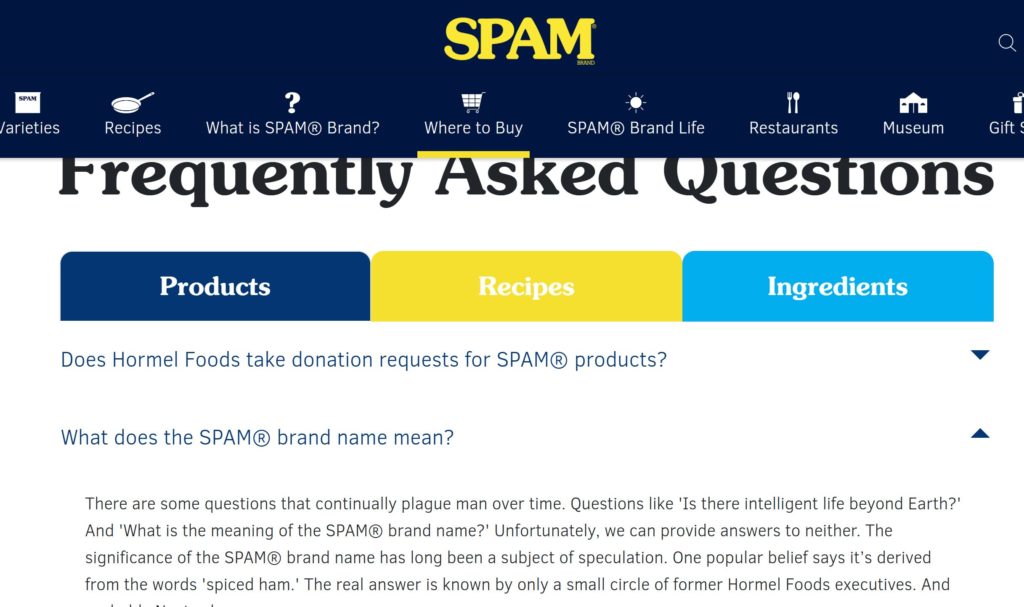
There’s been some debate about what SPAM means, with countless theories behind the acronym’s origins. Some believe it means “Spiced Ham”, “Scientifically Processed Animal Matter”, or “Spare Ham“. While others have a slightly more realistic guess, “Shoulder of Pork and Ham.” It turns out that even within the company there has been some discrepancies about the meaning. Jay Hormel once went on record, confirming SPAM means “Spiced Ham.” However, the company has since changed its stance and its website now states that “Spiced Ham” is merely a “popular belief“. Perhaps the world will never know the true meaning of SPAM.
4. There’s a Mystery in Every Can
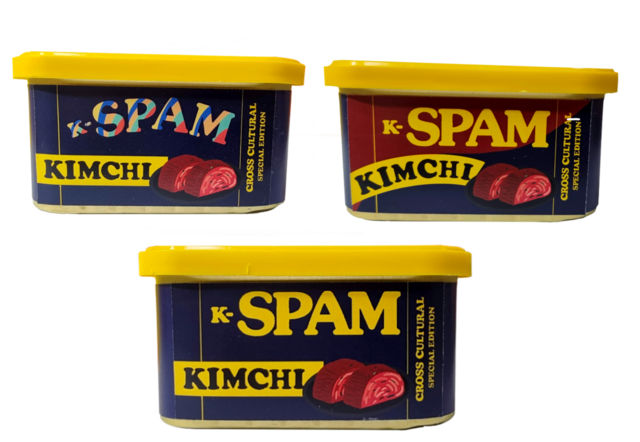
The mysteries of SPAM extend beyond its name. Many people speculate that it is made of mystery meat. On the contrary, SPAM is made using only pork shoulder, with the company choosing to make an important decision not to use the same subpar bits and pieces that go into other processed meats such as bologna or hot dogs. Instead, the pork shoulder is ground and mixed with salt, sugar, water, potato starch, and sodium nitrite. Next, it’s canned and undergoes a 20-minute heat treatment to kill any remaining bacteria. Moreover, the product has undergone numerous transformations since emerging into the food industry in 1937. For example, the company has released new flavors like Teriyaki or Maple Syrup and even created options that have reduced fat and sodium.
Read More: Kellogg’s CEO Under Fire for Telling People to ‘Eat Corn Flakes For Dinner’ Amid Rising Food Costs
5. SPAM is Cheap all over the World

Although SPAM is a cheaper option in the United States this isn’t the case in other parts of the world. For instance, South Korea associates SPAM with wealth and prosperity. So much so, that the canned meat is a popular gift option. “Spam maintains a mythical aura on the Korean market for reasons that escape many. Given Spam’s introduction to South Korea through the U.S. military, it enjoyed an association with prosperity and nutritiousness during an earlier era.” Explains renowned Yale lecturer, Koo Se-woong.
6. It’s less Costly than Fresh Meat

We already know that it’s a cheaper commodity in the US, than in other parts of the world. However, many are shocked to learn that a 12 oz. can of SPAM actually costs more per ounce, than a 12 oz slab of fresh meat in supermarkets across the US. For instance, Target sells a 12 oz can of SPAM for $4, at around 33 cents an ounce. However, fresh meat of the same weight comes in at 5-7 cents less per ounce.
7. Not the Only Option

As previously mentioned, SPAM made its way into the homes of many Asian and Pacific islands and territories including Guam, the Philippines, and South Korea as a result of its popularity among U.S. military personable. Contrary to popular belief, it isn’t the only kind of canned meat that was popular during WW2. During the war, around 100 million cans were distributed to soldiers stationed everywhere and gained its popularity as a result of having been on the market longer than other brands. However, Hormel wasn’t the only company to manufacture the product with other brands like Armour & Company, also selling millions of cans of their own canned meat products including Treet. Other examples of popular canned meat options among soldiers and even in homes across the U.S. and the world include pork and beans. Or chicken and vegetables.
Read More: 11 Foods You Shouldn’t Store Together
8. SPAM Lasts Forever

Canned goods have a reputation for long lasting preservation. Meaning they can be consumed, in some cases, years after their manufacture date. Although this is somewhat true, the notion that canned goods like SPAM last forever, is misguided. SPAM contains a preservative called Sodium Nitrate. It’s powerful in inhibiting the growth of harmful bacteria. Coupled with a cooking process to kill bacteria, these methods of preservation ensure the goods are safe for human consumption for up to 3 years, and some cases 5, after the manufacture date. However, manufacturers still advise against eating SPAM, or other canned goods, well past their expiration date. Note that the majority of the time, both the expiration date and manufacture date are stamped on the cans.
9. SPAM is Unpopular in Culinary Arts
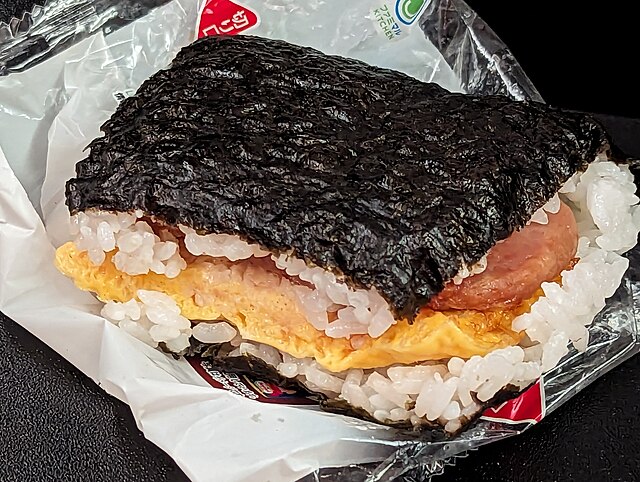
Although SPAM is thought not to be a high-quality food option, many chefs have gotten creative with the commodity. It can be found on menus all over the US. For example, many places that serve Sushi or Ramen use SPAM in many of their dishes. For some, it’s actually a tribute to the familiar flavors of their childhood. As such, they incorporate the canned meat into their dishes as a way of transporting themselves, and others, to a time of simplicity, joy, or nostalgia.

Thanks to its cost-effectiveness SPAM has played a major role in numerous cultures and countries. From its symbolism of prosperity to its life-sustaining role during tough times like war or the Great Depression, in which it became popular for dinner time, rather than its marketed purpose of a quick and easy lunch or breakfast option. SPAM has taken on many faces since emerging in 1937 and is likely to continue to gain, if not simply maintain, its popularity for generations to come. Particularly so, as the world continues to face uncertain times.
Sources
- “Spam.” Britannica
- “The History Behind Why Hawaiians Are Obsessed with Spam.” Vice.
- “9 False Facts About Spam We’ve All Believed.” Daily Meal. Jacob Smith. March 4, 2024.
- “Spam sales hit record high for seventh straight year in 2021, says Hormel Foods CEO.” CNBC Kevin Stankiewicz. December 9, 2021.
